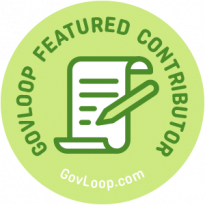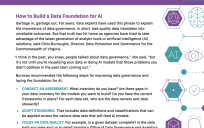In today’s fast-paced, tech-driven world, data is often hailed as the new oil. But while oil must be refined before it powers anything useful, data needs to be analyzed, interpreted, and contextualized to truly drive effective decisions. For senior government executives and public-sector employees, embracing data-driven decision-making is not just a trendy catchphrase — it’s a strategic imperative. So, let’s dive into how government employees can harness the power of data to make informed decisions that lead to better outcomes for the communities they serve.

The Power of Data-Driven Decision-Making
Imagine this: You’re tasked with rolling out a new public health initiative. You could rely on gut feelings, past experiences, or perhaps even a crystal ball. Or, you could use solid data — collected, analyzed, and presented in a way that illuminates trends, predicts outcomes, and highlights areas for improvement. The latter isn’t just the smart choice; it’s the responsible one. In the public sector, where taxpayer money and public trust are at stake, data-driven decision-making (DDDM) enhances accuracy, accountability, and transparency.
Encouraging a Data-Driven Culture
To make data-driven decisions effectively, it’s essential to cultivate a data-driven culture. This involves more than just having access to data; it requires a mindset shift across the organization. Leaders must advocate for decisions based on thorough data analysis, and employees at all levels should feel empowered to use data as a key decision-making tool. But how do you encourage this cultural shift?
- Lead by Example: When executives make data the cornerstone of their decisions, it sets a precedent. It’s not just about using data when it’s convenient; it’s about embedding data analysis into every aspect of government operations.
- Promote Collaboration: Encourage departments to share data insights. Cross-departmental collaboration can reveal broader trends and insights that might not be apparent when data is siloed.
- Invest in Tools and Training: Equip your team with the right tools and the know-how to use them. Data visualization software, predictive analytics, and other technologies are only as effective as the people using them.
Data Literacy: The Foundation of Data-Driven Decision-Making
While it’s all well and good to talk about data-driven decision-making, there’s a catch: It requires a workforce that’s data literate. Data literacy isn’t just for analysts and IT professionals anymore. It’s a must-have skill for anyone involved in making decisions that affect public policy and services.
Boosting Data Literacy Across the Government Workforce
- Offer Training and Resources: Create or sponsor workshops, online courses, and other learning opportunities focused on data literacy. Even basic training on understanding key data concepts can make a significant difference.
- Foster a Learning Environment: Encourage continuous learning. Government employees should feel comfortable asking questions about data, seeking clarification, and exploring new data tools.
- Appoint Data Champions: Identify and empower data champions within each department. These individuals can help bridge the gap between raw data and actionable insights, serving as a resource for their colleagues.
Conclusion: Data-Driven Government Is Smart Government
A government that leverages data effectively is one that can deliver services more efficiently, respond to citizen needs more accurately, and allocate resources more judiciously. But it all starts with embracing data-driven decision-making and ensuring that every employee — from the newest hire to the most senior executive — has the data literacy skills necessary to interpret and act on data. So, the next time you’re faced with a tough decision, remember: Skip the crystal ball, and reach for the data instead. It’s not just a smarter way to work — it’s the best way to ensure you’re truly serving the public good.
Dr. Rhonda Farrell is a transformation advisor with decades of experience driving impactful change and strategic growth for DoD, IC, Joint, and commercial agencies and organizations. She has a robust background in digital transformation, organizational development, and process improvement, offering a unique perspective that combines technical expertise with a deep understanding of business dynamics. As a strategy and innovation leader, she aligns with CIO, CTO, CDO, CISO, and Chief of Staff initiatives to identify strategic gaps, realign missions, and re-engineer organizations. Based in Baltimore and a proud US Marine Corps veteran, she brings a disciplined, resilient, and mission-focused approach to her work, enabling organizations to pivot and innovate successfully.





Leave a Reply
You must be logged in to post a comment.